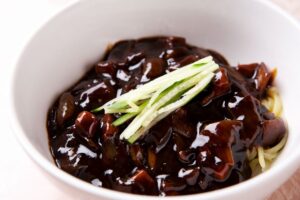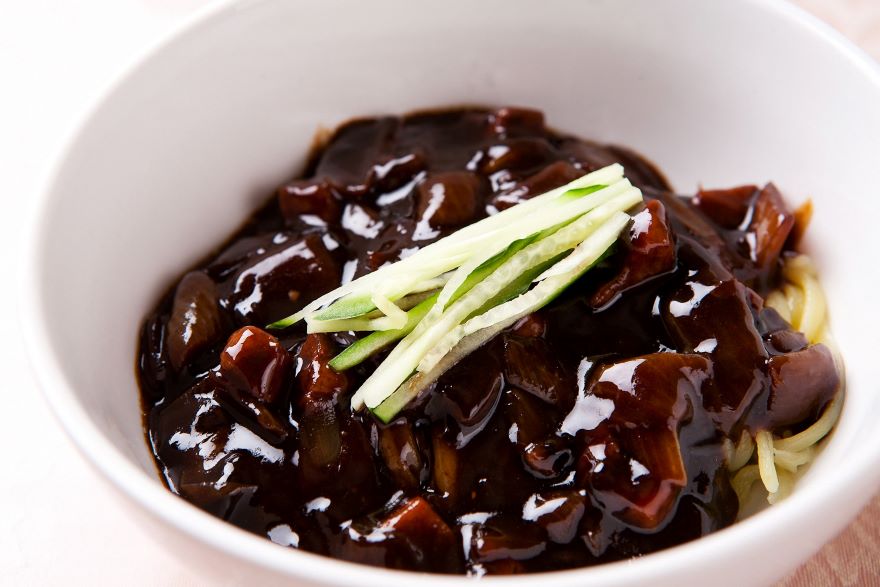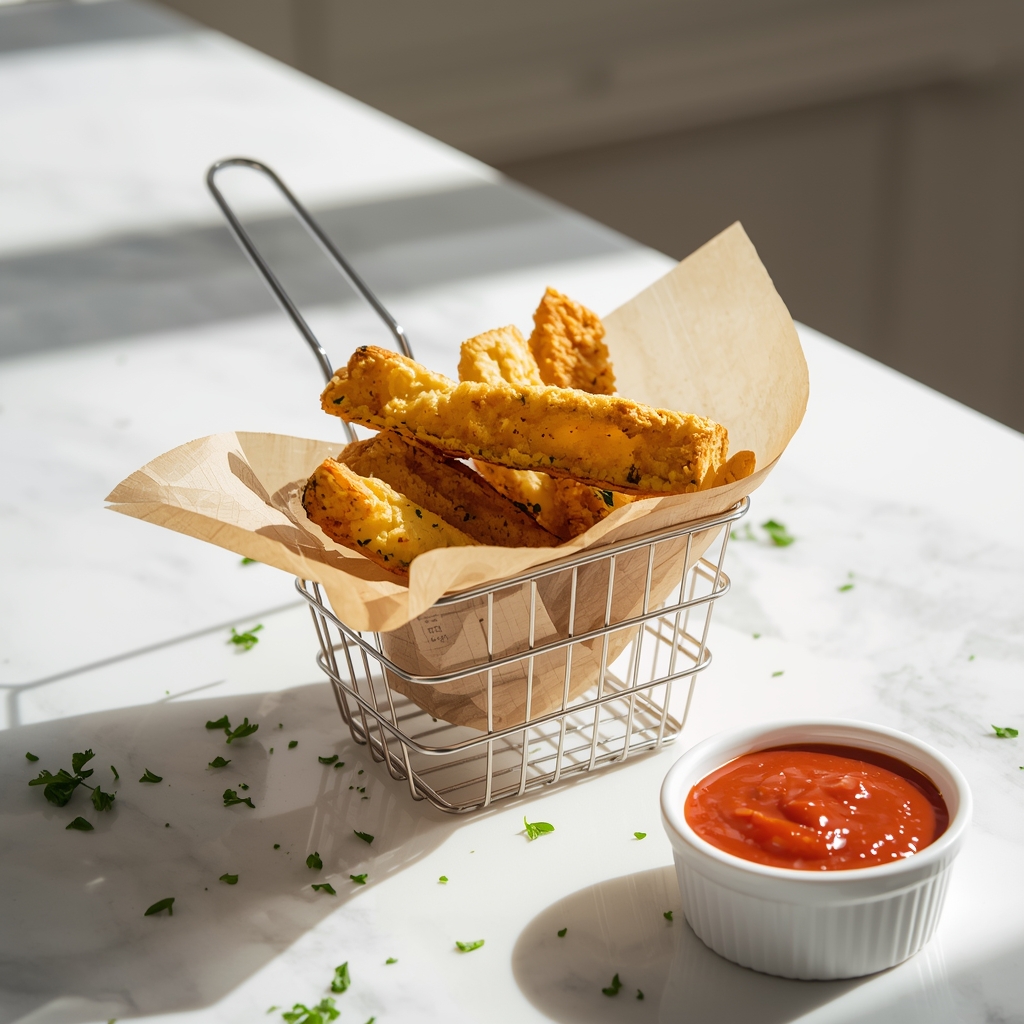I remember one weekend when my boys asked for homemade burgers. When I checked the fridge, the boiled black beans caught my eye. Since I’d been experimenting with black beans for black bean sauce, I figured—why not turn them into a plant-based burger patty? I even whipped up a bit of sauce to go with it. My eldest son, Christopher, noticed a slightly unusual smell at first, but he ended up ignoring it. No one complained about the taste—it actually turned out meaty and satisfying.
That cooking experiment got me curious about other ways to use black beans, especially in Asian dishes. I still remember the first time I tasted proper Chinese black bean sauce back when I was living in the UK, out at a family-run restaurant with my dad and stepmom. It was nothing like the bottled versions I’d tried before—deeper, funkier, and packed with flavor. After chatting with the chef and experimenting in my own kitchen, I found out the secret: it’s all about the right kind of black beans.

These aren’t the regular ones you find in a can—they’re fermented black soybeans, or douchi, used in Chinese cooking for centuries. They’ve got a bold, salty punch that’s hard to explain until you’ve tasted it. I’ve been making my own sauce for a few years now, and I figured it’s time to share what I’ve learned—how to choose good beans, make a proper batch, and actually put it to use in everyday meals.
Why Black Bean Sauce Tastes So Good
When I got interested in making authentic Chinese food at home, I kept running into recipes calling for black beans for black bean sauce. After some confusion (and a failed attempt with regular black beans), I figured out they were talking about fermented black soybeans. “You’ll find them in everything from Cantonese stir-fries to bold Sichuan dishes, and people have been cooking with them for a couple thousand years—long before soy sauce showed up in anyone’s pantry
I’ll be honest—when I first saw fermented black beans, I thought they looked a little questionable. Tiny, shriveled, a bit crusty with salt… not exactly appetizing. But the moment I tossed them into a hot pan with garlic, everything changed. The smell, the depth of flavor—it totally caught me off guard.. When I make the sauce, I usually toss them in with a good amount of garlic (the more, the better), some ginger, soy sauce, and just a touch of sugar to balance things out. If I’ve got Shaoxing wine or rice wine on hand, I’ll add a splash for extra depth.
I’ll never forget opening my first pack—the smell practically jumped out at me. It was sharp, funky, and kind of overwhelming at first.. Not exactly what I expected, but once they hit the pan, the harshness mellowed out and turned into this rich, savory magic. That umami—what the Japanese call the “fifth taste”—is what keeps you going back for more.
Creating Your Own Black Bean Sauce Recipe
After buying a few different jarred black bean sauces and being disappointed, I started making my own. The homemade version has a fresher taste, and I can adjust the garlic (I like a lot) and saltiness to match whatever I’m cooking. Plus, I’ve read that fermented foods have health benefits – something about good bacteria and more available nutrients – though I mainly make it because it tastes better.
The Essential Ingredient: Fermented Black Beans
If there’s one thing I’ve learned, it’s that regular black beans just don’t cut it. I tried once, thinking, “Beans are beans, right?” Nope. They’re fine in burritos, but way too mild to match the bold, savory flavor of the fermented kind.
You’ll usually find fermented black beans in the sauce section of Asian grocery stores. They’re not expensive—just a few bucks for a pack that’ll last a while. When you’re picking some out, look for ones that are dark, almost jet black, with a slight sheen and just a little salt on the surface. And don’t be thrown off by the smell when you first open the bag—it’s strong, but that’s how you know they’re authentic.
If you’re ready to experience the deep umami flavor of traditional Chinese cooking, these Apexy Premium Fermented Black Beans are an excellent choice. Carefully fermented to achieve a balanced salty and savory profile, they’re perfect for crafting your own black bean sauce or enhancing stir-fries, steamed dishes, and more. Their versatility and rich taste make them a staple in any Asian-inspired kitchen.

Apexy Premium Fermented Black Beans, Douchi, Authentic Asian Recipes Natural and Flavorful, Traditional Asian Seasoning & Ingredient, Gourmet Quality-Perfect for Asian Cuisine & Flavorful Dishes 16oz
- Traditional Black Fermented Beans – An exciting addition to your Asian-inspired meal plans these dried fermented black beans, or douchi, can be used with stir fry, steam, and so much more.
- Savory, Salty Flavor Profile – Whether you’re eating them whole or crafting a fermented black bean paste our beans boast an authentic Chinese flavor that’s carefully balanced between salty and savory.
- Whole, Chopped, or Minced – These dry fermented black beans can be added to tons of great recipes and taste amazing in wonderfully unique ways including minced up, pureed, chopped, or even whole. You’ll love their amazing umami flavor and texture.
- Pair with Strong Seasonings – Our black beans fermented flavor boasts a uniquely strong flavor which means they pair perfectly with tons of other big, bold seasoning flavors including things like ginger, garlic, or spicy chiles.
My Step-by-Step Process
Here’s how I make my black bean sauce:
Ingredients:
- 1/2 cup fermented black beans
- 3 tablespoons vegetable oil
- 2 tablespoons minced garlic (about 6 cloves)
- 2 tablespoons minced ginger
- 1/2 cup water
- 2 tablespoons soy sauce
- 1 tablespoon Shaoxing wine (Chinese rice wine) or dry sherry
- 1-2 teaspoons sugar
- 1/2 teaspoon sesame oil
Equipment:
Small bowl
Cutting board and knife
Wok or skillet
For consistent heat distribution and effortless cooking, the Cuisinart 12-Inch Everlasting Non-Stick Stainless Steel Stir-Fry Pan is a fantastic addition to your kitchen. Its durable non-stick surface ensures your black bean sauce doesn’t stick, making cleanup a breeze. The pan’s design is ideal for sautéing garlic, ginger, and fermented black beans to perfection, helping you achieve that authentic flavor in every dish.

Cuisinart MultiClad Pro 12″ w/Helper Handle Skillet, Inch, Non Stick Stainless Steel
- Updated cast-stainless-steel handle stays cool to the touch and comes riveted for strength
- 12-inch skillet with quantanium nonstick interior provides healthier cooking options
- Rims are tapered for drip-free pouring
- Dishwasher-safe; oven-safe up to 550 degrees F; broiler-safe
Wooden spoon
Preparation:
I start by rinsing the fermented black beans under cold water using a small strainer. I give them a good swish with my fingers to shake off the extra salt—twice usually does the trick. If they sit in the water too long, they start to lose that punchy flavor—learned that the hard way.
Once rinsed, I spread them out on a paper towel and pat them dry. Then I chop them up roughly. Now and then, I’ll press a few with the side of my knife—just something I started doing to pull out a little extra flavor.
Next, I heat a splash of oil in my wok over medium heat. Once it’s warm, I toss in the garlic and ginger—nothing fancy, just chopped and tossed straight in. I stir them around for maybe half a minute, just until they smell fragrant but not browned.
Then I toss in the black beans. I stir them around for a minute or so, just enough to wake them up. The smell at this point is incredible—garlic, soy, and that tangy fermented edge that makes you hungry before the sauce is even done.
Next, I add a bit of water, a good splash of soy sauce, a little cooking wine, and a pinch of sugar. Once it starts to bubble, I lower the heat and let it simmer for about 15 minutes, stirring now and then while I tidy up or check my phone.
When it looks slightly thickened, I take it off the heat and stir in a little sesame oil. I let it cool before pouring it into a clean jar.
All in all, it takes about 25 minutes, and most of that is hands-off while it simmers. It keeps in the fridge for around a week.
Versatility in the Kitchen: Elevating Everyday Cooking
The best thing about black bean sauce is how it transforms basic ingredients into something special. It’s become my weeknight dinner secret weapon.
Perfect Protein Pairings
Chicken:
One of my fallback dinners is chicken thighs sliced up and tossed in a pan with some onions and bell peppers. Toward the end, I throw in a spoonful of black bean sauce and give it a quick stir. It sticks to everything in the best way and somehow makes it taste like I ordered from a good Chinese spot.
Beef:
Black bean sauce and beef? Total match. I usually cut up some flank steak thin, splash a bit of sauce on it, and cook it quick and hot. Where the meat hits the pan, it gets these crispy, caramelized bits that disappear first. Everyone at the table knows to grab fast or miss out.
Pork:
If it’s a slow Sunday, I’ll steam some spareribs with black bean sauce—a throwback to my favorite dim sum orders. While it steams, the sauce soaks into the meat, and it turns out so tender you barely need effort to eat it. Definitely not a weeknight dish, but when I make it, there are no leftovers.
Fish:
When I want something that looks fancy but takes no time, I grab a couple of white fish fillets—cod or tilapia usually—and spread a little black bean sauce on top. I steam or bake it, depending on how lazy I’m feeling. It adds flavor without covering up the fish, and it always tastes like I tried harder than I actually did.
Tofu:
Even people who claim they don’t like tofu usually change their minds after trying this. I press a block of firm tofu, cut it into cubes, and pan-fry until golden and crispy. Then I toss it with black bean sauce and a handful of green onions. That crispy outside and soft middle combo really works—and the sauce ties it all together.

Enhancing Vegetables
Black bean sauce makes ordinary vegetables taste special:
Broccoli: A quick stir-fry of broccoli with black bean sauce is my standard “I need a green vegetable” solution. The florets catch all the sauce in their little tree tops.
Green Beans: I blanch green beans, then toss them in a hot pan with a spoonful of sauce. They stay bright green and crisp but pick up all that savory flavor.
Bell Peppers: There’s something about the sweetness of red bell peppers that just works with the salty bite of the sauce—it’s a really good balance. What I like most, though, is that the sauce doesn’t hide the ingredients. If anything, it brings out their flavor even more—like they taste more like themselves, if that makes sense.
What’s cool about this sauce is that it doesn’t cover up the flavor of what you’re cooking – it actually makes the original ingredients taste more like themselves, if that makes sense.
Practical Tips From My Kitchen to Yours
After messing up a few batches over the years, I’ve picked up some practical knowledge that might save you some kitchen mishaps
Storing Your Homemade Sauce
The first time I made black bean sauce, I left it out on the counter overnight and regretted it. Now I know better – let it cool completely, then store it in a clean jar in the fridge. It stays good for about a week. If the sauce smells off or you spot any mold, it’s time to toss it—better safe than sorry.
If you’re in the middle of cooking and realize you’re out of black bean sauce (or never got around to making it), don’t panic. I’ve used hoisin or oyster sauce in a pinch. They’re not identical, but they’ll give you that same savory, takeout-style flavor. Just keep in mind—hoisin’s on the sweeter side, and oyster sauce has more of a briny, seafood vibe. I usually start with the same amount I’d use for black bean sauce, then tweak it after a quick taste.
I’ve also discovered that many recipes calling for black bean sauce work fine with just the fermented black beans themselves, roughly chopped and added directly to the dish – especially for simple stir-fries where the beans will have time to release their flavor during cooking.
The Cultural Significance of Black Bean Flavor
One thing I like about traditional ingredients is that they’ve been around for so long—they come with a story. Take black bean sauce, for example. It’s not used the same way in every dish. In Cantonese cooking, it’s usually added gently, just enough to boost the flavor without drowning out lighter ingredients like fish or leafy greens.
I read somewhere that food scientists have actually studied these traditional fermented sauces because they’re so effective at adding flavor. The fermentation creates glutamates – the same compounds that make Parmesan cheese and mushrooms so savory. It’s pretty cool that Chinese cooks figured this out thousands of years ago through trial and error.
The Perfect Cookware for Preparing Black Bean Sauce
Create delicious and authentic black bean sauce with the Lodge Pre-Seasoned Cast Iron Skillet. This durable and reliable skillet provides even heat distribution, ensuring your sauce cooks consistently and develops rich, complex flavors. With its versatile design and easy-to-clean surface, the Lodge Cast Iron Skillet is a must-have tool for any home cook looking to elevate their black bean sauce game.
- 𝗢𝗿𝗴𝗮𝗻𝗶𝗰𝗮𝗹𝗹𝘆 𝗣𝗿𝗲-𝗦𝗲𝗮𝘀𝗼𝗻𝗲𝗱: Start cooking healthier meals right out of the box with our 100% organic flaxseed oil pre-seasoning, free from synthetic chemicals and providing a naturally non-stick surface.
- 𝗦𝗺𝗼𝗼𝘁𝗵 𝗠𝗶𝗹𝗹𝗲𝗱 𝗦𝘂𝗿𝗳𝗮𝗰𝗲: Enjoy even heat distribution and excellent non-stick performance with our smooth milled surface, perfect for delicate foods like eggs and easy cleanup.
- 𝗦𝘂𝗽𝗲𝗿𝗶𝗼𝗿 𝗛𝗲𝗮𝘁 𝗥𝗲𝘁𝗲𝗻𝘁𝗶𝗼𝗻: Designed for optimal heat retention, our 10 inch skillet delivers consistent cooking temperatures for frying, baking, and searing, ensuring perfect results every time.
- 𝗩𝗲𝗿𝘀𝗮𝘁𝗶𝗹𝗲 𝗜𝗻𝗱𝗼𝗼𝗿 & 𝗢𝘂𝘁𝗱𝗼𝗼𝗿 𝗨𝘀𝗲: Suitable for stovetops, ovens, grills, and campfires, this heavy-duty skillet is versatile enough for any cooking setting, making it ideal for both indoor and outdoor meals.
- 𝗘𝗿𝗴𝗼𝗻𝗼𝗺𝗶𝗰 𝗛𝗮𝗻𝗱𝗹𝗲: The ergonomic handle provides a secure, comfortable grip, allowing you to move effortlessly from stove to table, even with heavy dishes.
The Rewards of Homemade Black Bean Sauce
Making my own black bean sauce has genuinely improved my home cooking. It’s one of those small changes that makes a big difference in how my food tastes. The process isn’t complicated – it’s actually easier than making many other sauces – but the depth of flavor makes it totally worth it.
Store-bought black bean sauces never quite hit the mark for me. Most of the ones I’ve tried are either too salty, overly sweet, or thickened to the point where they taste a bit heavy. When I make it myself, the flavor’s just cleaner—it has that salty-fermented depth with a little sweetness, but nothing overpowering.

I never make it exactly the same way twice. One day it’s extra garlic, the next I’m adding a splash of whatever wine I’ve got open, and if I’m in the mood, I’ll throw in a bit of chili for a kick. That’s the best part of making it yourself—you can play around until it tastes just right for you.
I’ve introduced several friends to the magic of real fermented black beans for black bean sauce, usually by inviting them over for a simple stir-fry dinner. Most are surprised by how different it tastes from the bottled version they’ve tried before.
If you’ve only ever used the jarred kind of black bean sauce, it’s worth picking up a bag of fermented black beans and trying them out. You don’t need a fancy recipe either. Just toss a spoonful into a simple stir-fry—chicken and bell peppers, or whatever veggies you’ve got lying around.
The way the flavor comes through is deeper and more layered than anything store-bought. So if you haven’t cooked with them yet, grab a pack next time you’re at the Asian market and give it a shot—you might be surprised at how often you reach for them after that.

*We may earn a commission for purchases made using our links. Please see our disclosure to learn more.




